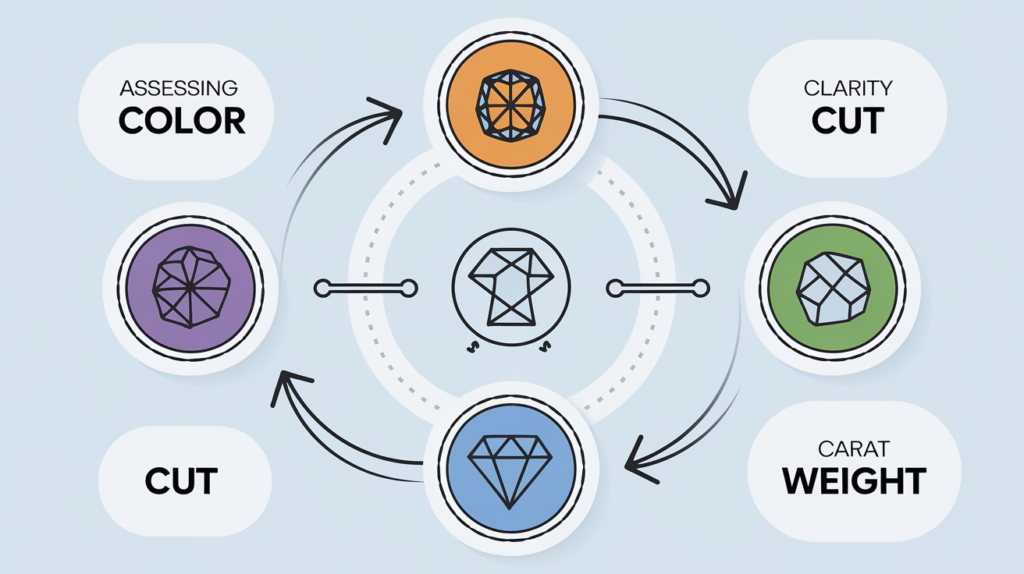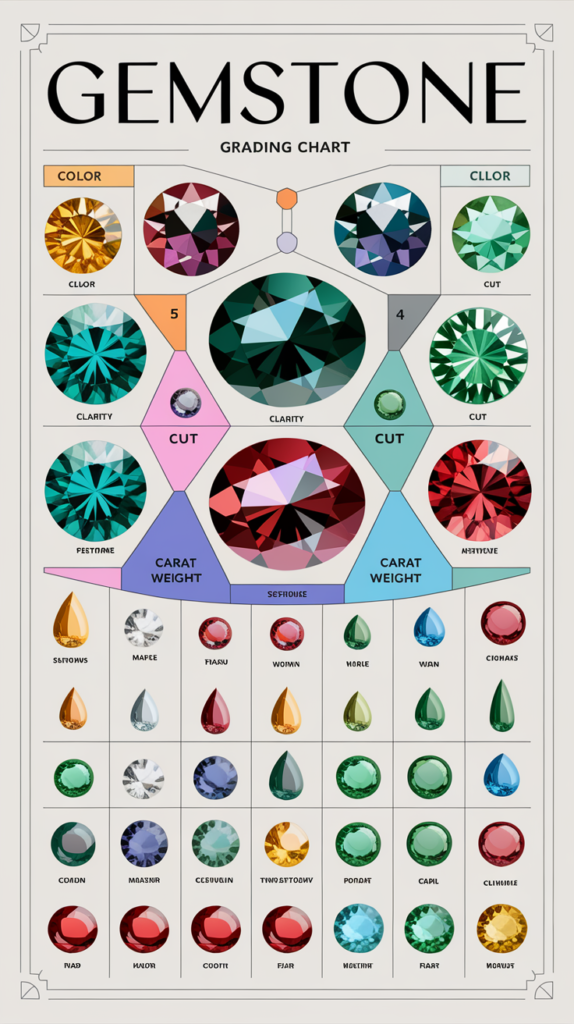
Navigating the world of gemstones has taught me valuable lessons about quality assessment. After spending years examining countless stones and making both brilliant choices and costly mistakes, I’ve developed a deep appreciation for systematic gemstone grading. Let me share what I’ve learned about evaluating these precious beauties.
Understanding the Basics of Gemstone Grading
My journey into gemstone grading began when I mistakenly purchased what I thought was a flawless sapphire, only to later discover it was heavily treated. This expensive lesson sparked my passion for proper gemstone assessment.
| Quality Factor | Importance Level | Impact on Value |
|---|---|---|
| Color | Primary | 30-50% |
| Clarity | Secondary | 15-25% |
| Cut | Primary | 20-35% |
| Carat Weight | Secondary | 10-20% |
The 10 Essential Steps for Grading Gemstones
1. Color Assessment
The first step involves evaluating three crucial aspects of color:- Hue: The basic color of the gemstone
- Saturation: The intensity or purity of color
- Tone: The lightness or darkness of the color
2. Clarity Examination
One time, while examining a emerald under magnification, I discovered an inclusion that looked like a perfect miniature garden – what gemologists call a “jardin.” These characteristics make each stone unique.Clarity grades typically fall into these categories:- Flawless (FL)
- Very Very Slightly Included (VVS)
- Very Slightly Included (VS)
- Slightly Included (SI)
- Included (I)
3. Cut Quality Evaluation
The cut quality significantly impacts a gemstone’s brilliance and value. Here’s what to look for:| Cut Aspect | Ideal Range | Effect on Beauty |
|---|---|---|
| Symmetry | 95-100% | Critical |
| Polish | Very Good to Excellent | High |
| Proportions | Based on specific gem type | Essential |
4. Weight Measurement
Accurate carat weight measurement requires proper calibrated equipment. I once lost a sale because my old scale was off by 0.2 carats – a costly lesson in equipment maintenance.5. Treatment Detection
Modern treatments can be sophisticated and hard to detect. Common treatments include:- Heat treatment
- Fracture filling
- Surface coating
- Irradiation
- Dyeing
6. Authentication Process
Distinguishing natural from synthetic stones requires specialized knowledge and equipment. Key tools include:- Loupe (10x magnification)
- Microscope
- UV light
- Specific gravity liquids
7. Origin Assessment
Geographic origin can significantly impact value. Famous sources often command premium prices:| Gemstone | Premium Source | Value Impact |
|---|---|---|
| Ruby | Burma (Myanmar) | +50-200% |
| Sapphire | Kashmir | +100-300% |
| Emerald | Colombia | +30-150% |
Common Mistakes to Avoid
Through years of experience, I’ve identified several pitfalls:
- Overlooking subtle inclusions
- Misidentifying treatments
- Improper lighting during color assessment
- Rushing the evaluation process
FAQ Section
1. What equipment do I need to start grading gemstones?
Start with a 10x loupe, proper lighting, and a clean white grading surface. As you advance, invest in a microscope and more specialized tools.
2. How important is certification in gemstone grading?
Very important! Reputable laboratory certificates provide unbiased verification of a stone’s qualities and characteristics.
3. Can gemstone grades change over time?
While the inherent properties don’t change, exposure to chemicals, heat, or rough handling can affect a stone’s appearance and grade.
4. What’s the difference between gem grading and appraisal?
Grading focuses on quality characteristics, while appraisal determines monetary value based on these grades plus market factors.
5. How does lighting affect gemstone grading?
Proper lighting is crucial. Use standardized daylight-equivalent lighting (5500-6500K) for consistent color evaluation.
6. Are there different grading systems for different gemstones?
Yes, while some principles are universal, specific gemstones may have unique grading criteria based on their characteristics.
7. How do I identify synthetic stones?
Look for specific inclusion patterns, growth structures, and use specialized testing equipment when necessary.
8. What role does color zoning play in grading?
Color zoning can either enhance or detract from a stone’s value, depending on the type of gemstone and the pattern’s aesthetics.
9. How do treatments affect grading?
Treatments must be disclosed and often impact value. Some treatments are more accepted than others in the market.
10. What’s the most challenging aspect of gemstone grading?
Consistency in grading across different lighting conditions and maintaining objectivity despite personal preferences.
Key Takeaways
- Always grade stones under standardized conditions
- Document findings systematically
- Stay updated with industry standards
- Invest in proper tools and education
- Build experience through practice
Conclusion
Gemstone grading is both an art and a science. While these guidelines provide a solid foundation, true expertise comes through hands-on experience and continuous learning.
Remember, every stone tells a story, and proper grading helps us read and understand that story better. Stay curious, keep learning, and don’t be afraid to seek expert opinions when needed.

